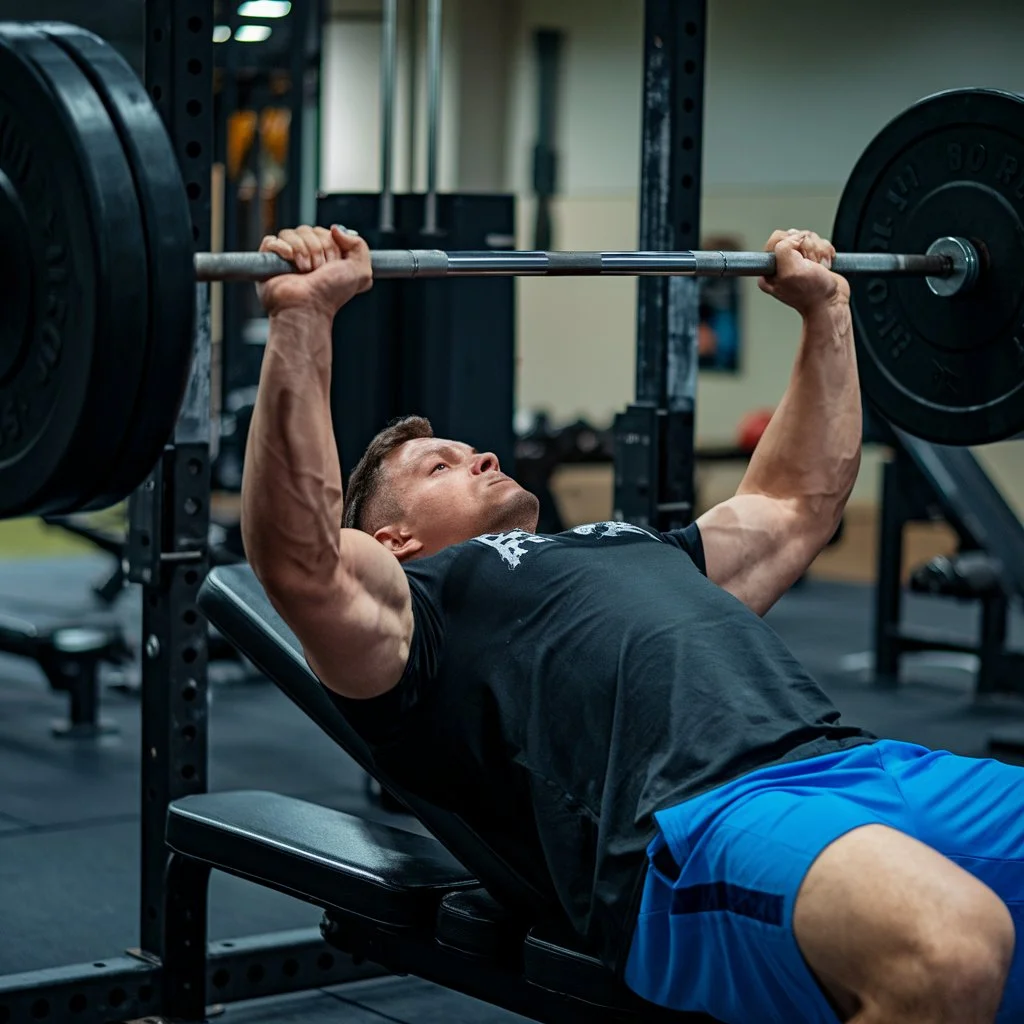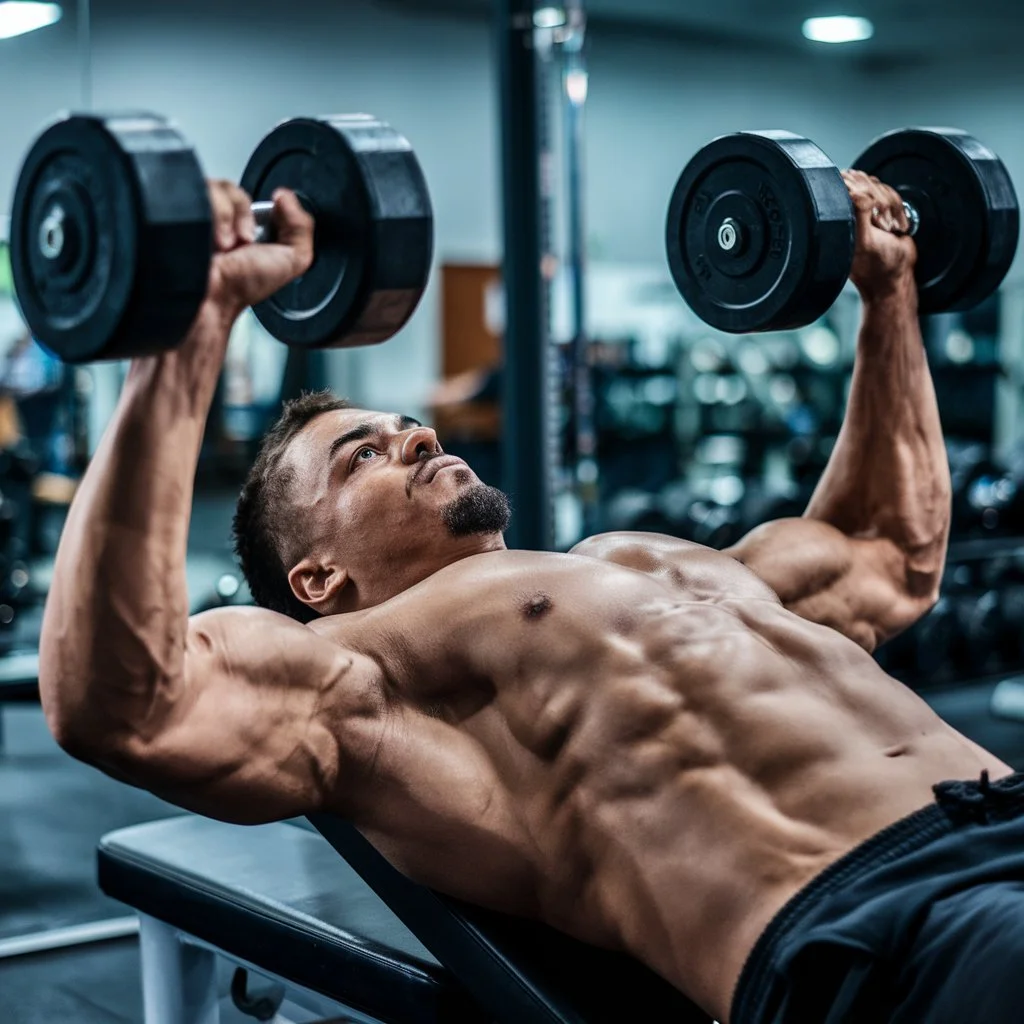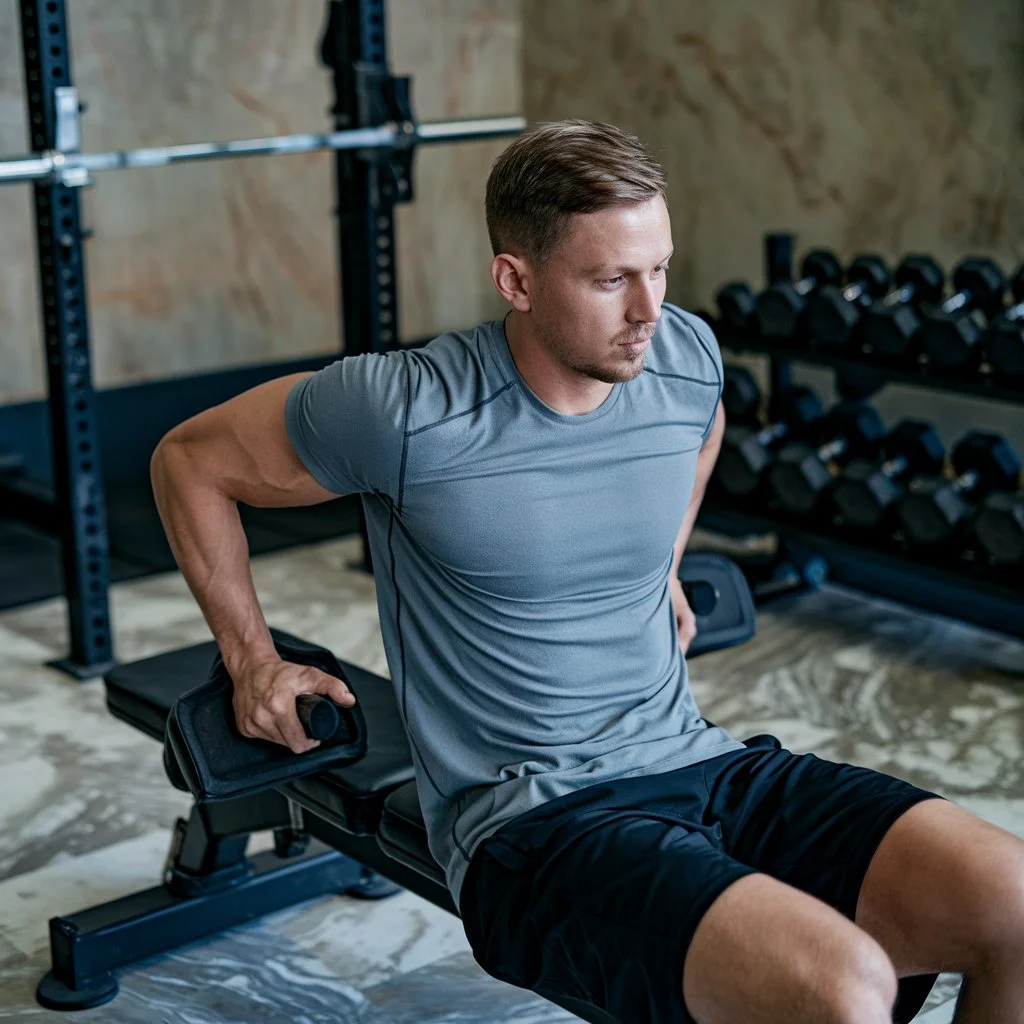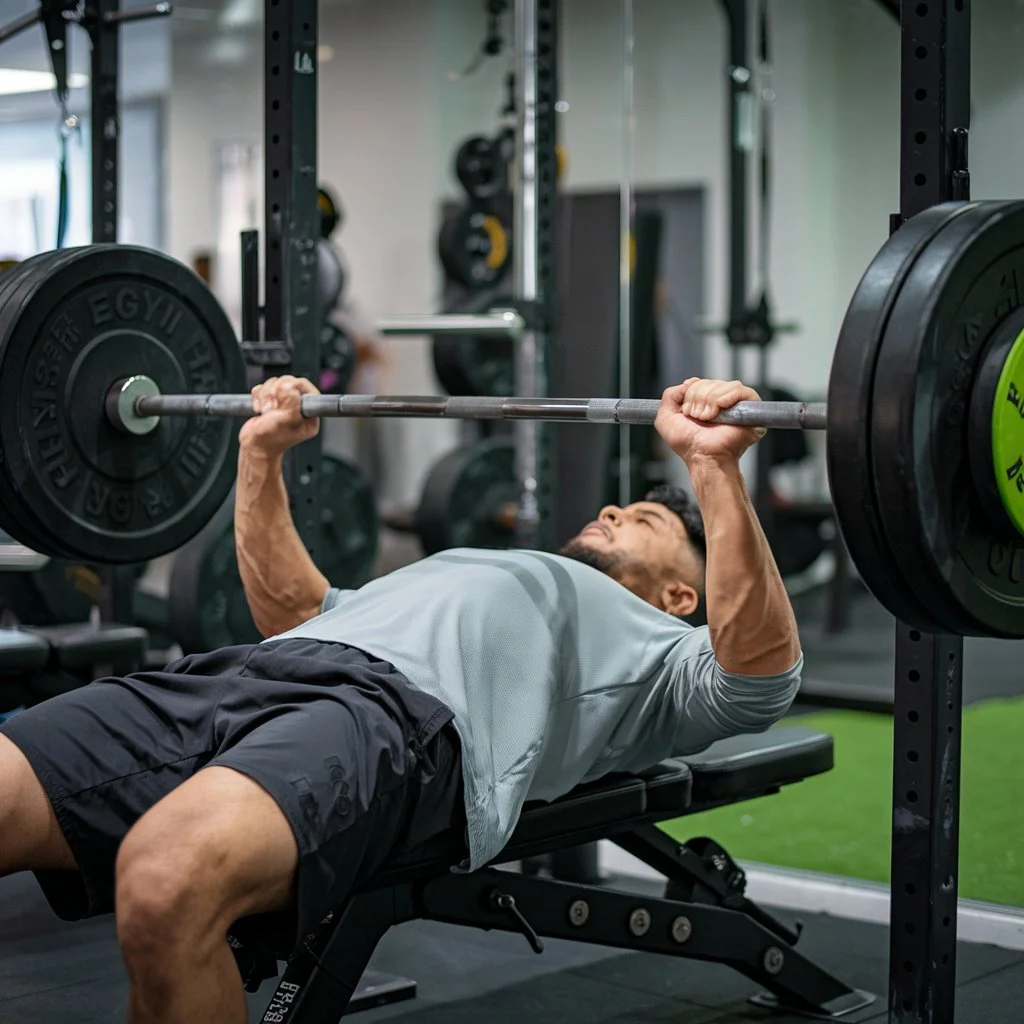Welcome to the world of gym bench workouts! If you’re new to fitness or looking for a straightforward way to get in shape, you’ve come to the right place. In this beginner’s guide, we’ll explore the numerous benefits of using a gym bench for your workouts. You may want to build strength, tone muscles, or improve fitness.
The gym bench can help you do all these things. It is a versatile and accessible tool that can help you reach your goals. Let’s dive into why incorporating gym bench exercises into your routine can be a game-changer for your fitness journey.
Warm-Up
Prior to commencing your exercise regimen, it is essential to adequately prepare your body with a thorough warm-up. Here’s why:
1. Importance of Warming Up: Warming up is like priming your body for action. It increases blood flow to your muscles, raises your heart rate, and loosens up your joints. This helps prevent injuries and prepares your body for the more intense exercises ahead.
2. Dynamic Stretches: Dynamic stretches involve moving your body through a range of motion. These stretches not only help improve flexibility but also activate your muscles, getting them ready for action. Simple movements like arm circles, leg swings, and torso twists are great examples of dynamic stretches.
3. Light Cardio: Engaging in light cardiovascular exercise, such as jogging in place or jumping jacks, further increases blood flow and elevates your heart rate. This helps raise your body temperature and primes your cardiovascular system for the workout ahead.
By adding dynamic stretches and light cardio to your warm-up, you’ll set yourself up for a safer and better workout. Remember, taking a few extra minutes to warm up can make a world of difference in your overall performance and injury prevention efforts.
Bench Press Workout
The bench press is a key strength exercise. It mainly targets the chest muscles. However, it also engages the shoulder and tricep muscles. Here’s how to do it with proper form and technique:
Description
– Assume a supine position on a bench with your feet securely positioned on the floor.
-Grasp the barbell with a grip slightly wider than shoulder-width, palms facing outward.
– Lower the barbell slowly and under control towards your chest, keeping your elbows at a 45-degree angle to your body.
– Once the barbell lightly touches your chest, push it back up explosively to the starting position, fully extending your arms.
– Remember to breathe out as you push the weight up and breathe in as you lower it down.
Muscles Targeted
The bench press primarily works the pectoralis major. It’s the large chest muscle that does pushing.
– Shoulders: The anterior deltoids, located at the front of your shoulders, assist in pressing the weight overhead.
– Triceps: The triceps brachii, located at the back of your arms, help extend your elbows to push the weight.
Incline Bench Press
The incline bench press is a variation of the traditional bench press that targets the upper portion of the chest muscles. Here’s how to perform it correctly:
Explanation:
1.Adjust the bench to a 30-45 degree angle, with the head higher than the feet.
2. Recline on the inclined bench with your feet securely grounded.
3. Hold the barbell with a grip wider than shoulder-width, palms facing outward.
4. Lower the barbell towards the upper part of your chest, keeping your elbows at a 45-degree angle to your body.
5. Press the barbell back up to the starting position, fully extending your arms.
Emphasis on Targeting Different Areas of the Chest
– The incline bench press places more emphasis on the upper portion of the chest muscles compared to the flat bench press.
– By targeting different areas of the chest, such as the upper chest, you can achieve a more balanced and sculpted appearance.
Recommended Sets and Reps
– Start with 3 sets of 8-10 reps if you’re new to the exercise, focusing on proper form and technique.
– As you become more experienced, you can increase the weight and aim for 3-4 sets of 6-8 reps to build strength and muscle mass.
– Allow for adequate rest between sets, approximately 1-2 minutes, to ensure proper recovery.
Adding the incline bench press to your routine can help you build a balanced chest and meet your fitness goals. Remember to adjust the bench angle and weight according to your fitness level and listen to your body to avoid injury.
Recommended Sets and Reps
– Beginners: Start with 3 sets of 8-10 reps with a lighter weight to focus on proper form and technique.
– Intermediate/Advanced: Gradually increase the weight and aim for 3-4 sets of 6-8 reps to build strength and muscle mass.
– Rest for about 1-2 minutes between sets to allow for adequate recovery.
The bench press is a key exercise in any strength training program. It can help you build upper body strength and muscle definition. Make sure to prioritize proper form and gradually increase the weight as you become more comfortable with the movement.
Dumbbell Flyes Workout
Dumbbell flyes are a great exercise for targeting and sculpting the chest muscles. Here’s how to do them correctly:
Instructions
1. Recline on a bench holding a dumbbell in each hand, palms facing towards your body.
2. Stretch your arms over your chest, with a gentle bend in your elbows.
3. Lower the dumbbells out to the sides in a wide arc motion, keeping a slight bend in your elbows.
4. Lower the dumbbells until you feel a stretch in your chest muscles, but avoid letting your elbows drop below the level of your torso.
5. Activate your chest muscles to return the dumbbells to the initial position, emphasizing a chest squeeze at the peak of the motion.
Focus on Stretching and Contracting the Chest Muscles
– Dumbbell flyes primarily target the pectoralis major muscles, helping to stretch and strengthen the chest.
Focus on moving controlly. Emphasize the stretch and contraction of the chest muscles with each repetition.
Recommended Sets and Reps
– Start with 3 sets of 10-12 reps if you’re new to the exercise, using a weight that challenges your muscles but allows you to maintain proper form.
As you gain experience, you can lift more weight. Aim for 3-4 sets of 8-10 reps. This will build more chest strength and muscle definition.
– Take a brief rest period of 1-2 minutes between sets to allow for adequate recovery.
Adding dumbbell flyes to your workout can make your chest look strong and defined. Just make sure you do them right, move slowly, and use weights that aren’t too heavy for you. This way, you can get the best results without hurting yourself.
Bench Dips Workout
Bench dips are a simple yet effective exercise for targeting the triceps, the muscles on the back of your arms. Here’s how to perform them correctly:
Explanation
1. Sit on the edge of a bench with your hands gripping the edge, fingers facing forward.
2. Slide your bottom off the bench, supporting your weight with your hands.
3. Lower your body by bending your elbows until your upper arms are parallel to the ground.
4. Push yourself back up by straightening your arms, returning to the starting position.
Importance of Maintaining Proper Form
– To prevent shoulder strain, keep your shoulders down and back throughout the movement.
– Avoid letting your shoulders hunch forward or shrug up towards your ears.
– Maintain a slight bend in your elbows at the top of the movement to keep tension on the triceps and prevent locking out your elbows.
Recommended Sets and Reps
– For beginners, start with 2-3 sets of 8-10 reps, focusing on proper form and controlled movements.
– As you become more comfortable with the exercise, gradually increase the number of sets or reps.
– Aim for a challenging but manageable level of resistance to effectively target the triceps without compromising form.
Incorporating bench dips into your workout routine can help strengthen and tone your triceps, improving your overall arm strength and definition. Remember to prioritize proper form and listen to your body to avoid injury.
Bulgarian Split Squats (Using Bench)
Bulgarian split squats are an excellent lower body exercise that targets the legs and glutes. Here’s how to perform them using a bench:
Introduction to Using the Bench for Split Squats
– Using a bench adds stability and allows for greater range of motion during Bulgarian split squats.
– By elevating one foot on the bench, you increase the difficulty of the exercise, leading to greater muscle activation in the working leg.
Instructions
1. Stand a few feet in front of a bench, facing away from it.
2. Place the top of one foot (laces down) on the bench behind you, with the other foot planted firmly on the ground in front of you.
3. Keeping your torso upright and your chest lifted, lower your body straight down by bending your front knee.
4. Lower your body until your front thigh is parallel to the ground, ensuring that your front knee stays in line with your toes and does not extend past them.
5. Press through your front heel to return to the starting position, driving your hips forward as you stand up.
6. Repeat for the desired number of reps before switching legs.
Recommended Sets and Reps per Leg
– Start with 3 sets of 8-10 reps per leg if you’re new to the exercise, focusing on maintaining proper form throughout.
– As you become more comfortable, you can increase the number of sets or reps to further challenge your muscles.
– Aim for a controlled and steady pace, and take a brief rest period of 1-2 minutes between sets to allow for recovery.
Doing Bulgarian split squats during your workouts can make your legs and bottom muscles stronger and more stable. Start with lighter weights or just use your body weight until you get used to the exercise. Then, as you get better, you can make it harder by using heavier weights.
Cool Down
After completing your workout, it’s essential to cool down properly to aid in recovery and reduce the risk of injury. Here’s why cooling down is important and some static stretching exercises you can include:
Importance of Cooling Down
1. Promotes Recovery: Cooling down allows your heart rate and breathing to gradually return to normal levels, helping your body transition from exercise mode to rest mode.
2. Reduces Muscle Soreness: Cooling down can help alleviate muscle soreness by preventing the build-up of lactic acid and promoting circulation to flush out metabolic waste products.
3. Improves Flexibility: Incorporating stretching exercises during your cool down can improve flexibility and range of motion in your muscles and joints, reducing the risk of injury in future workouts.
Static Stretching Exercises
1. Hamstring Stretch: Sit on the ground with one leg extended straight in front of you and the other bent. Reach towards your toes, keeping your back straight, until you feel a stretch in the back of your thigh. Hold for 20-30 seconds and switch sides.
2. Quadriceps Stretch: Stand tall and grab one ankle behind you, pulling it towards your glutes until you feel a stretch in the front of your thigh. Hold for 20-30 seconds and switch sides.
3. Chest Stretch: Stand with your feet shoulder-width apart and clasp your hands behind your back. Gently lift your arms up and back, opening your chest until you feel a stretch across your chest and shoulders. Hold for 20-30 seconds.
4. Calf Stretch: Stand facing a wall with one foot behind you and the other in front. Lean forward, keeping your back leg straight and your heel on the ground, until you feel a stretch in your calf. Hold for 20-30 seconds and switch sides.
5. Triceps Stretch: Reach one arm overhead and bend your elbow, placing your hand on the back of your neck. Use your other hand to gently push your elbow towards your head until you feel a stretch in your triceps. Hold for 20-30 seconds and switch sides.
Conclusion
In conclusion, incorporating gym bench exercises into your workout routine offers a multitude of benefits for your overall fitness and strength development. Let’s recap some of these benefits:
1. Versatility: The gym bench provides a versatile platform for targeting various muscle groups, including the chest, shoulders, arms, and legs, allowing for a comprehensive full-body workout.
2. Strength Building: Exercises such as the bench press, incline bench press, and dumbbell flyes are effective for building muscle strength and definition, helping you achieve your strength goals.
3. Muscle Engagement: Bench exercises engage multiple muscle groups simultaneously, promoting muscle balance, coordination, and functional strength.
4. Convenience: With just a bench and a few weights, you can perform a wide range of exercises, making it an accessible option for both beginners and experienced gym-goers.
5. Progression: As you become more proficient in your workouts, you can progressively increase the weight or intensity of your exercises to continue challenging your muscles and stimulating growth.
To get the best results from your gym bench workouts, it’s important to keep doing them regularly and use the right techniques. Stick to your workouts and make sure you’re doing the exercises correctly. This way, you’ll get stronger and avoid getting hurt.
So, whether you’re looking to build muscle, improve strength, or enhance overall fitness, the gym bench is a valuable tool that can help you reach your goals. Keep pushing yourself, stay dedicated, and enjoy the journey to a stronger, fitter you!

